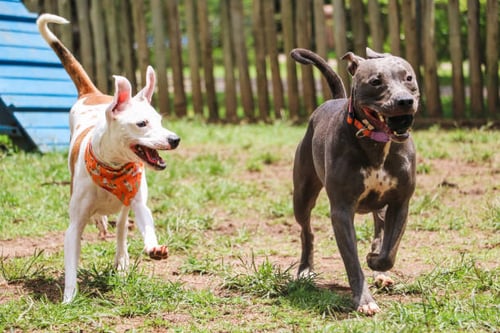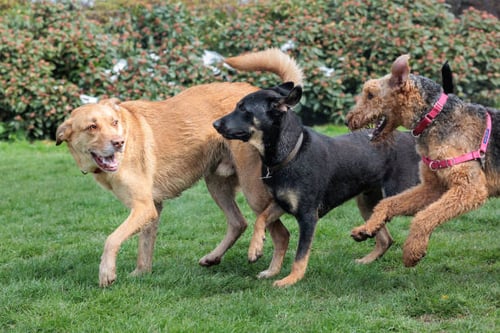For those of us who run dog daycares, the joyful cacophony of barking, playing, and scampering pups is a familiar sound. However, we also recognize that maintaining a comfortable noise level is vital, not only for the well-being of our furry clients and staff but also for our neighbors and the surrounding community. Navigating noise control in a dog daycare setting can be challenging, but with careful consideration and strategic planning, it's entirely feasible.
Why is Noise Control Important?

-
Dog Well-being: Excessive noise can be stressful for dogs. Just as humans might become stressed in a loud environment, dogs can become anxious and over-stimulated. Ensuring a quieter environment can make their experience in the daycare more enjoyable and less stressful.
-
Employee Well-being: Prolonged exposure to high noise levels can be detrimental to one's hearing and mental well-being. It can lead to increased stress, reduced productivity, and, over time, potential hearing loss.
-
Community Relations: Maintaining good relationships with neighbors and surrounding businesses is essential. Being considerate about noise levels can prevent complaints and ensure the long-term success of your facility.
Tips for Noise Control in Dog Daycares

-
Acoustic Materials: Invest in sound-absorbing materials and barriers. Acoustic panels, for instance, can be mounted on walls and ceilings to absorb sound. Floors can be covered with rubber mats which can help reduce the noise of scampering paws.
-
Zoning and Space Planning: Design your space smartly. Separate large breeds from smaller ones, and consider creating 'quiet zones' where dogs can relax away from more active play areas. It's also a good idea to place active play areas further from the perimeter walls of your facility.
-
Training and Positive Reinforcement: Use positive reinforcement techniques to encourage quieter behavior. While some barking is natural and to be expected, rewarding dogs for calm behavior can help reduce excessive noise.
-
Stagger Play Times: Instead of having all dogs play at once, consider staggered playtimes. This not only manages noise levels but can also prevent overcrowding and reduce the chances of incidents between dogs.
-
White Noise or Calming Music: Background sounds like white noise or calming dog-friendly tunes can mask some of the sharper sounds of barking, creating a more soothing environment.
-
Regular Breaks: Overstimulated dogs tend to be noisier. Ensure that there are regular intervals for dogs to rest and calm down.
-
Soundproofing: If you're in the process of selecting a location or building from scratch, consider soundproofing walls, especially if you're in a densely populated area.
-
Stay Informed: Noise regulations can vary based on locality. Make sure you're aware of any local ordinances or regulations related to noise.
-
Open Communication with Neighbors: Keep an open line of communication with your neighbors. Address concerns promptly and considerately. If you anticipate a particularly noisy day (like a special event), inform them in advance.
-
Continuous Monitoring: Invest in a decibel meter to regularly monitor the noise levels in your daycare. This will give you a clearer idea of peak noise times and areas that might require additional attention.
While a certain level of noise is to be expected in any dog daycare, it's essential to be proactive in managing and controlling it. Through a combination of design, training, and regular monitoring, it's entirely possible to run a bustling, energetic dog daycare that's also considerate of its noise footprint. And, if you're looking to take your dog daycare to the next level, start a free trial with Revelation Pets! Happy barking! 🐶






